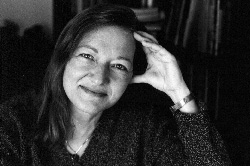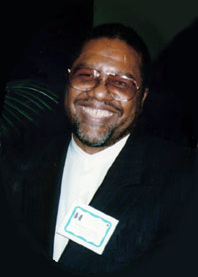Climate Research: Diversity at TC
Faculty members Robert Carter and Celia Oyler are conducting a three-year, mixed methods study of the College's diversity climate, interviewing more than 200 TC community members, mapping TC's ethnic, racial and gender demographics, reviewing past reports and other documents about diversity, and inventorying the visual "iconography" on campus.
Teachers College has mounted many efforts over the past decade to
improve the climate for diversity: It created the Office for Community
and Diversity in 2000; and it established the Vice President's position
to lead that office; it sponsored training sessions on microaggressions
and harassment.
While faculty members Robert T. Carter and Celia Oyler applaud
these and other initiatives, they believe two key elements have been
missing. First, these efforts have not fully sounded out the community
itself, tending to involve representatives of different constituencies
but not always capturing a range of voices from within each of those
groups. Second, they have not tapped the abundant research capabilities
at the institution--research that can elevate the conversation beyond
perception and into the realm of objective fact.
With those concerns in mind, Carter, Professor of Psychology and
Education, and Oyler, Associate Professor of Education, are conducting
a three-year, mixed methods study of TC's diversity climate. They are
interviewing more than 200 TC community members, including trustees,
senior staff, professional and union staff, faculty (including
adjuncts, instructors and lecturers) and students. At the same time
they are mapping the demographics of each of these groups, quantifying
the numbers and percentages of whites, African Americans, Latino/as,
males, females and others within each of those categories. They also
are conducting reviews both of past reports and other documents about
diversity at TC, and of the visual "iconography" on campus: signs,
posters, statues and other imagery that convey non-verbal or encoded
messages related to diversity.
Over the past several months, Carter and Oyler have been
presenting their findings on an ongoing basis to faculty (including
adjuncts and instructors), professional and union staff, students and
trustees, and receiving extensive feedback.
"The theoretical and conceptual approach we're taking is unique in
several ways," says Carter. "First, we're working in a transformative
way, sharing what we're learning as we go along and using both the
information and the feedback we get to inform other phases of the
project. But also, research on diversity climate is typically done more
narrowly, in terms of the diversity of the faculty or the student body.
We take the position that diversity issues for the faculty and students
aren't the same, nor are they the same as those for people in other
areas. In addition, it's one thing to deal in perceptions--to say, we
think we know what the climate looks like--and another to truly map out
that climate with graphs and charts. Because when you do that mapping,
and you share it around, then everyone is operating from the same base
of information."
The goal, Carter and Oyler say, is not to compare TC to other
institutions, but instead to focus on the institution itself and a more
widely shared, positive experience around diversity for people at TC.
To date, the two faculty members have completed a preliminary
draft of the demographic mapping. While it is too early to share the
hard numbers, certain basic trends are clear.
"Overall, the majority of executive staff members and tenured
faculty are white, though there are larger numbers of minorities at the
assistant professor level, and overall the majority of union staff
members are black and Hispanic," Carter says. "That's troubling when
you consider both the hiring pool of qualified minority doctorates
that's out there, and also when you compare it to the degree to which
gender parity has improved. I don't think that other institutions are
necessarily doing a better job. Our society is able to discuss other
kinds of differences among people, but the conversation about race
seems to continue to be difficult."
Carter says he is optimistic about the prospects for change, given
the commitment that the College is making to support this project and
other current initiatives around diversity.
"For me, the investment in this inquiry is significant, because it
breaks the pattern of the past," Carter maintains. "It's really
charting a new direction. The critical question is, what gets done with
what we find, because it has no value if it's not used. Members of the
community have to insist that it gets used, and leaders have to use it.
The leaders have indicated a willingness to do that by the investment
they've made in this effort, and in particular, by their commitment to
providing everyone with the same information so that we can all be on
the same page."
The Carter/Oyler study is part of a broader diversity effort that
involves a task force comprising faculty and senior administrators.
Inside will report on the work of the task force in subsequent issues.
Published Wednesday, Sep. 15, 2010

